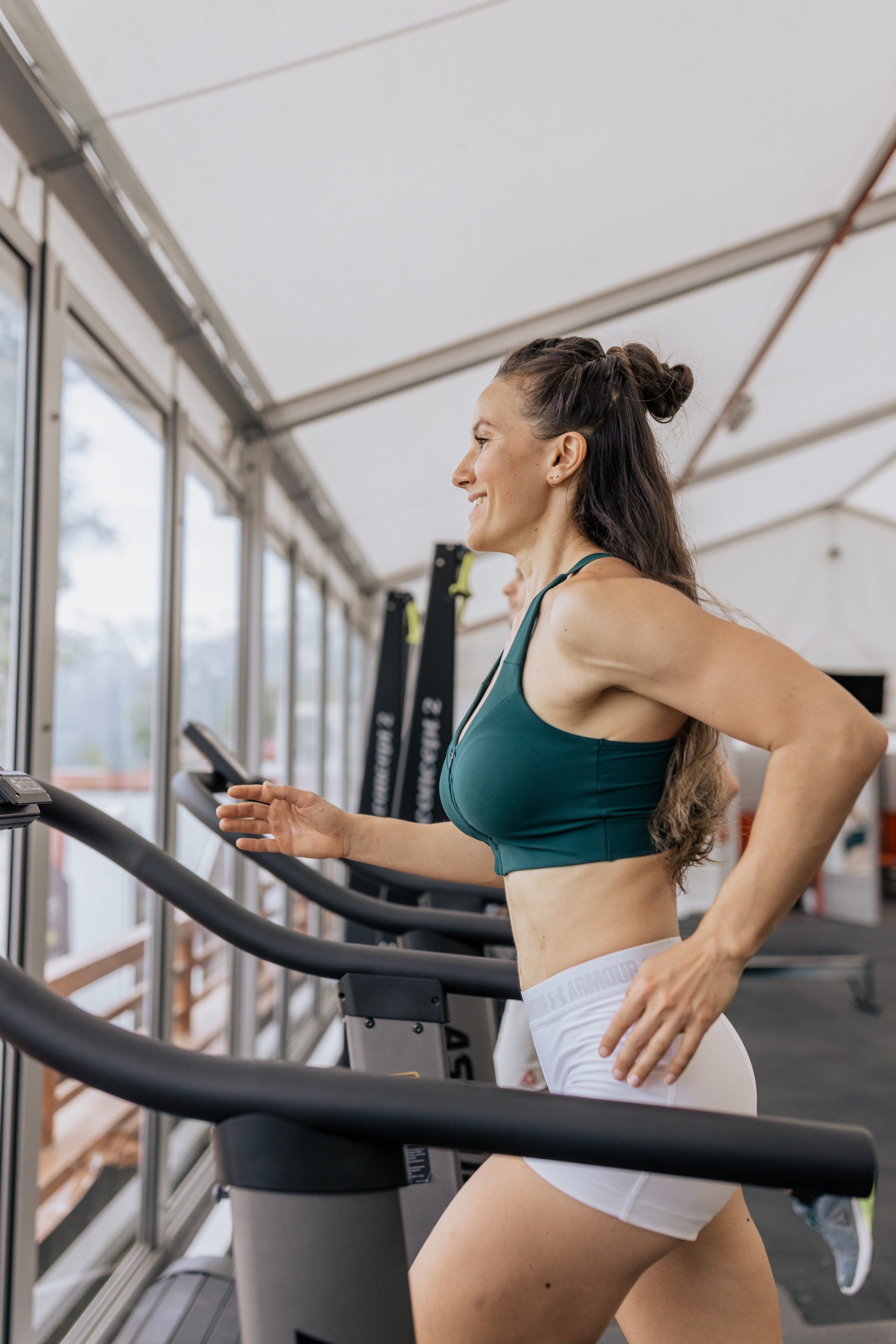Welcome to the exhilarating world of running, a journey where every step is a leap towards fitness freedom. If you’re seeking to understand where does running make you lose weight, you’ve embarked on a path that’s as rewarding as it is challenging. Running is not just a form of exercise; it’s a transformation that reshapes your body and elevates your spirit. It’s an adventure where the pounding of your feet on the trail syncs with the beating of your heart, signaling not just the burning of calories but also the ignition of a lifelong passion for health.
Whether you’re a seasoned marathoner or a casual neighborhood jogger, running can be a potent tool in your weight loss arsenal. The beauty of running lies in its simplicity and its power to effectively target fat loss across the entire body. As you lace up your shoes and set your sights on the open road, you’re taking control of your health narrative, one stride at a time. By integrating running into your routine, you’re signing up for a full-body workout that challenges every muscle group, boosts your metabolism, and sculpts your physique into a testament to your dedication.
But where exactly does running impact your body’s composition? How can you maximize your efforts to shed those stubborn pounds? That’s what we’re here to explore. So, tighten your shoelaces and prepare to dive into the world of running and weight loss. Visit our website to learn more and get started today! Click here.
The Science Behind Running and Fat Burning
.jpg)
Embarking on a running regimen triggers a fascinating physiological process geared towards burning fat. When you run, your body requires energy, and it turns to glycogen—a form of stored carbohydrates—for immediate fuel. However, as the workout progresses and glycogen stores deplete, your body begins to tap into fat reserves for sustained energy release, a phase known as the ‘fat-burning zone.’
This zone is typically reached after approximately 30 minutes of continuous aerobic activity, such as running, when the body optimizes the consumption of fat as fuel. But it’s not just the duration of the run that matters; intensity plays a crucial role, too. Engaging in higher intensity runs or incorporating interval training can raise your metabolic rate, leading to increased calorie burn both during and after exercise—a phenomenon known as excess post-exercise oxygen consumption (EPOC).
Moreover, the afterburn effect of running can contribute to an elevated metabolic rate for hours following your workout. This means that even after you’ve cooled down, your body continues to burn calories at a higher rate as it recovers and repairs muscle tissue. The combination of immediate calorie expenditure during the run and the prolonged metabolic boost afterward makes running an efficient method for fat loss and weight management. Regular running, therefore, not only helps in reducing body fat but also assists in maintaining muscle mass, ensuring that weight loss is predominantly from fat stores.
Target Areas: Where Running Impacts Weight Loss

Many runners question ‘where does running make you lose weight’? The answer lies in understanding how running impacts various parts of the body. Primarily, running is a full-body workout that predominantly targets the lower body, including the quadriceps, hamstrings, glutes, and calves. As these muscles continuously engage during a run, they become more toned and require energy, which the body derives from burning fat.
While it’s a myth that you can spot-reduce fat in specific areas, running helps reduce overall body fat percentage, which in turn can lead to visible changes throughout the body. For instance, as you shed pounds, you may notice slimming in the waist and hips, as these areas often store excess fat. Moreover, running can also contribute to a leaner appearance in the upper body and arms due to the complementary nature of arm movement while running, as well as the core-engaging aspect of maintaining good running posture.
Aside from visible fat loss, running has significant internal benefits. It boosts cardiovascular health, leading to better circulation and improved heart function. This overall enhancement in fitness can increase your metabolic rate, further aiding in weight loss. Additionally, running can improve body composition by increasing muscle mass, which naturally burns more calories at rest compared to fat tissue. Therefore, consistent running not only reduces fat but also builds lean muscle, which is crucial for a healthy metabolism and weight maintenance.
Maximizing Weight Loss Through Running Techniques

To maximize weight loss through running, it’s essential to employ strategic techniques that enhance the fat-burning process. One effective method is interval training, which alternates between high-intensity sprints and low-intensity recovery periods. This type of training not only burns a high number of calories during the workout but also stimulates the afterburn effect, where the body continues to burn calories at an elevated rate post-exercise.
Incorporating long runs into your routine is another beneficial technique. These runs should be at a moderate, sustainable pace, allowing you to cover more distance and burn more calories in a single session. Long runs also train your body to utilize fat as a fuel source more efficiently, which is key for long-term weight loss and endurance building.
Additionally, tempo runs are a great way to increase your lactate threshold, the point at which your body fatigues at a certain pace. By running just below this threshold, you can improve your running efficiency and speed, leading to more calories burned during each run. Tempo runs typically involve a comfortable pace that you can maintain for a significant duration, usually around 20-30 minutes, after a warm-up.
Lastly, mixing up your running terrain can contribute to weight loss. Challenging yourself with hills or trails requires more energy and engages different muscle groups, enhancing the calorie-burning effect. Diverse terrains also keep the body guessing, preventing adaptation and promoting continuous improvement and weight loss.
Remember, consistency is key. Regularly incorporating these techniques will not only help in shedding pounds but also improve overall running performance. It’s crucial to listen to your body and progress gradually to avoid injury and ensure sustainable weight loss.
Running Routines for Optimal Calorie Burn

Developing a running routine tailored for optimal calorie burn requires a blend of consistency, variety, and progression. A well-structured routine should start with a foundation of regular, easy runs. These runs are crucial for building endurance and form the backbone of any running program. As your fitness level improves, these easy runs will enable you to burn more calories as you’ll be able to run longer and at a slightly faster pace while still maintaining comfort.
To effectively burn calories, weekly speed work sessions should be integrated into your routine. These can include intervals on the track, fartlek runs, or hill repeats. These high-intensity workouts are not only shorter in duration but are excellent for increasing your metabolic rate and boosting calorie burn both during and after your workouts due to the heightened oxygen consumption post-exercise.
Another key component is the long run, typically done once a week. This run, which progressively increases in length as you train, burns a significant number of calories due to its extended duration. The slow and steady nature of long runs also trains your body to become more efficient at burning fat as a fuel source, which is beneficial for weight loss and endurance.
Finally, incorporating strength training and cross-training activities like swimming, cycling, or yoga can complement your running routine. These activities build muscle, which can increase your resting metabolic rate, and provide variety, which can prevent burnout and overuse injuries.
By following a comprehensive running routine that includes a mix of run types and cross-training, you can create an optimal environment for calorie burn and weight loss. Adjusting the intensity, frequency, and duration of your runs over time will help avoid plateaus and continue to challenge your body.
Maintaining Weight Loss: Running and Lifestyle Balance
Maintaining weight loss is a journey that extends beyond the track or treadmill. It’s the harmonious blend of a consistent running regimen and a balanced lifestyle that leads to long-term success. Incorporating running into your life as a regular activity is the first step. Aim for at least 150 minutes of moderate-intensity aerobic activity or 75 minutes of high-intensity activity per week, as recommended by health authorities.
However, the effort doesn’t stop when your run does. A nutrient-rich diet plays a pivotal role in maintaining weight loss. Consuming whole foods like fruits, vegetables, lean proteins, and whole grains can provide you with the energy needed for your runs while also helping you manage your calorie intake.
Hydration is another critical aspect; drinking adequate water supports metabolism and helps in recovery post-run. Equally important is sleep; quality rest is essential for muscle repair and hormone balance that aids weight control.
Remember, running is a part of a broader lifestyle change. Stress management through mindfulness or meditation can prevent emotional eating, while social support from friends, family, or a running community can motivate you to stick with your goals.
For those eager to embark on this transformative journey, ‘Run Just For Fun’ is your go-to source for inspiration and guidance. Visit our website to learn more and get started today! Click here.


